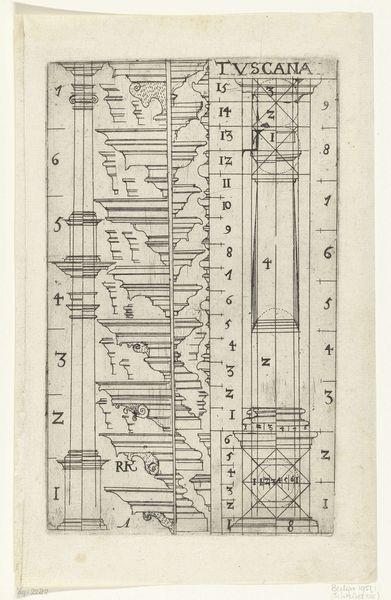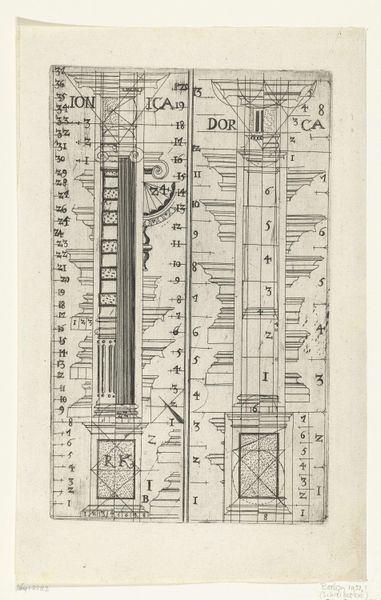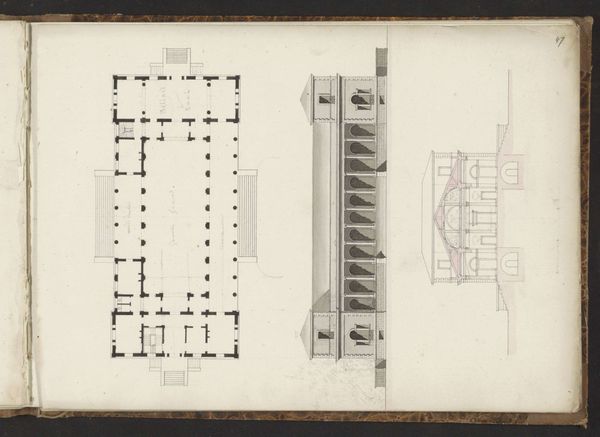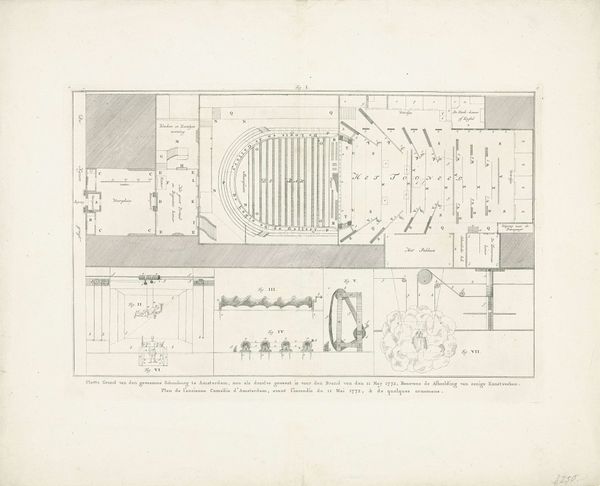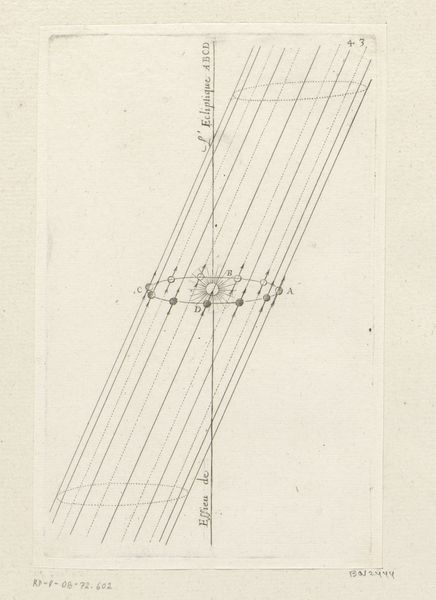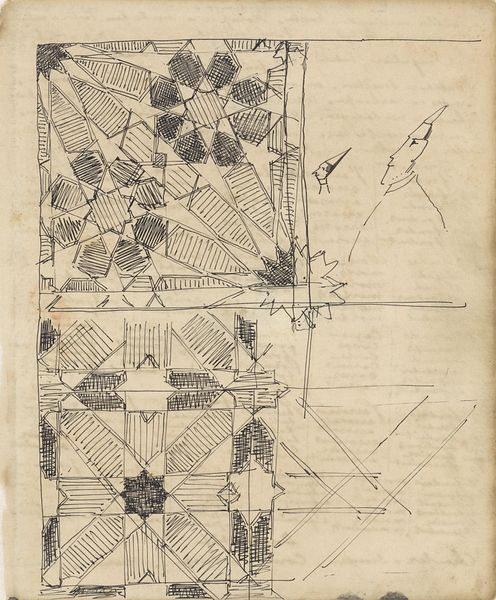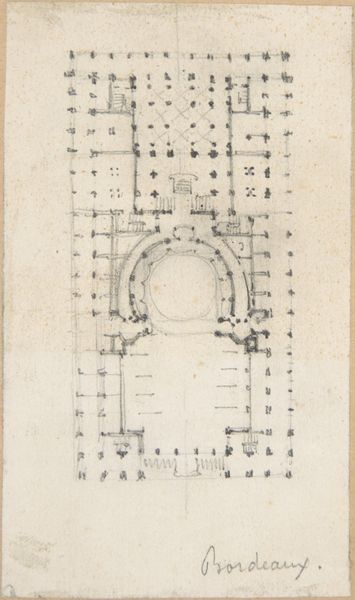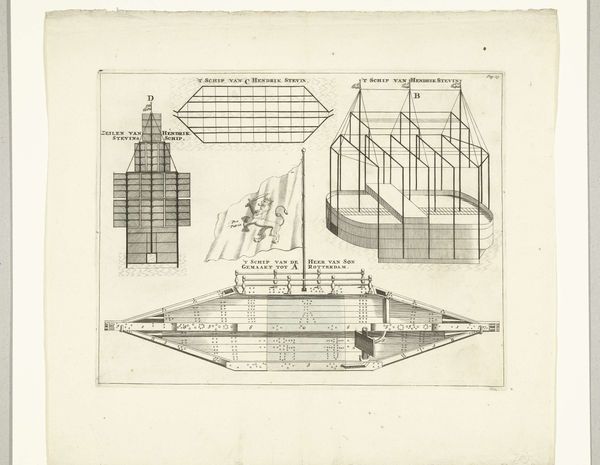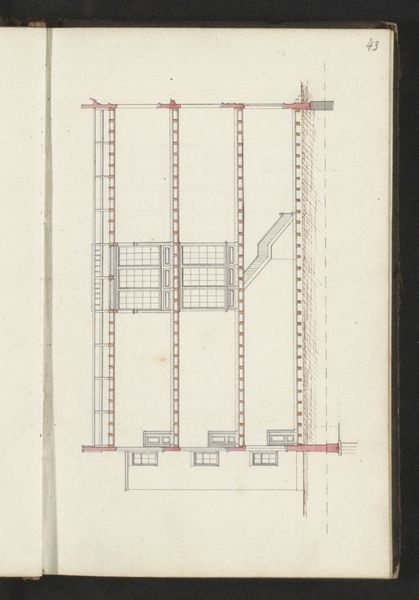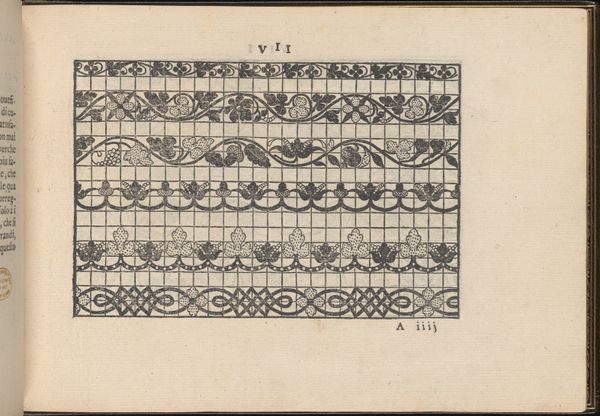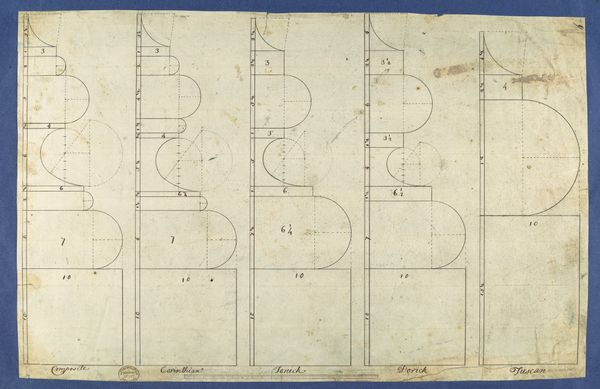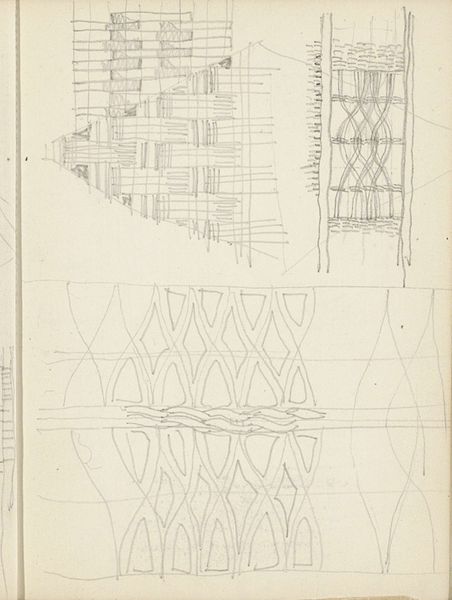
drawing, print, engraving, architecture
#
architectural sketch
#
drawing
# print
#
form
#
11_renaissance
#
geometric
#
classicism
#
line
#
engraving
#
architecture
Dimensions: height 214 mm, width 132 mm
Copyright: Rijks Museum: Open Domain
Curator: This print, created in 1622, is entitled "Korintische en Composietzuil," or "Corinthian and Composite Column" in English. Editor: Immediately striking is the austerity of this engraving. The cross-hatching and numbered scale evoke a strong sense of formal architectural drawing. Curator: Precisely. Notice the clarity with which the anonymous artist depicts the minute details of both column styles, using line and geometric forms to present their proportions and construction. Editor: Beyond the surface elegance, I wonder about the cultural significance. Architecture embodies power, doesn't it? Who was granted the opportunity to build or commission buildings featuring these column designs and what did these structures mean for broader society? Curator: Those are relevant points. From a formal perspective, the visual language employed—line, proportion, geometry—speak directly to classicism’s pursuit of order and rationality, echoing principles from Vitruvius. This print becomes a manifestation of the values espoused by Renaissance thinkers, artists, and patrons, as well as serving as a record. Editor: It seems clear that this classical framework, focused on mathematical ratios and order, would also imply control and a particular kind of elite societal vision, influencing not only structures but those who inhabited them and broader narratives about whose voices matter most in shaping public space. Curator: These forms also tell stories. The Corinthian column represents delicate ornamentation and complexity while the Composite—with its mix of Ionic volutes and Corinthian acanthus leaves—attempts synthesis. Editor: It is interesting to think about the implications of these visual choices that extend into civic identity, societal rank and perhaps even political alignment during that period, which saw new merchant classes and new types of building being constructed. Curator: Certainly, viewing the structure's visual components as communicating more than just a codified technique expands its usefulness. Editor: By integrating contextual knowledge with close formal reading, perhaps we can appreciate a work's impact on not only architecture, but broader conversations about our collective ideals of harmony, authority, and, indeed, beauty.
Comments
No comments
Be the first to comment and join the conversation on the ultimate creative platform.
